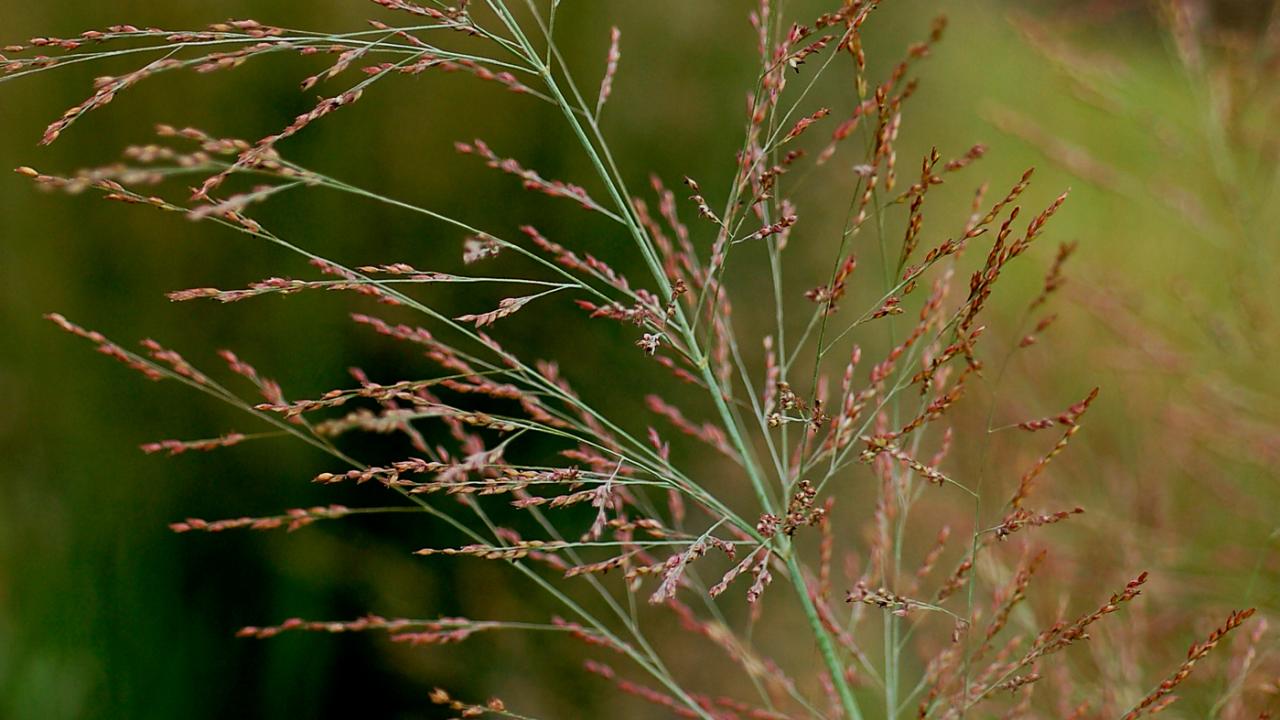

Plant Profiles
Daffodils
Narcissus spp.
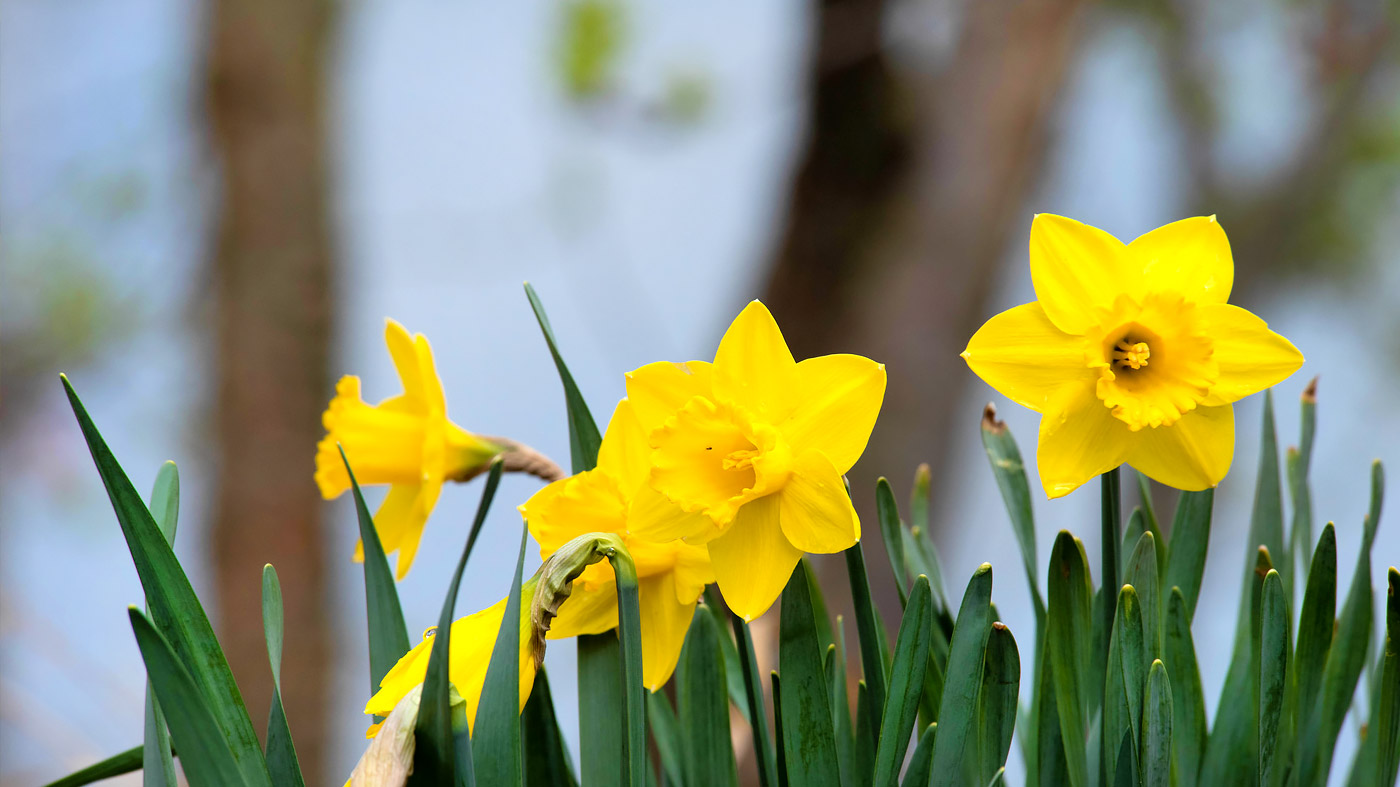
Greek mythology tells of the beautiful youth, Narcissus, who was so self-infatuated that he spent hours at the garden pool gazing at his reflection. Echo, a mountain nymph, fell madly in love with him, but her love was not returned by the vain Narcissus. Echo wasted away from loneliness until only her voice remained, which disappeared into the mountains to mock every sound it heard. The gods, angry at the cold and conceited Narcissus, changed him into a flower, destined to spend eternity at the water’s edge nodding at his reflection.
Spring is here when the daffodils bloom
Who can possibly doubt that spring is among us when the tiny nodding skirts of the first narcissus pop through the warming soil? Although tulips have their place in the spring theme, daffodils are truly the signature that the sun is warmer, robins are returning, and the dormant garden is springing back to life. When sweeping drifts of daffodils raise their bright yellow blossoms, we know spring has truly arrived. The Garden has more than half a million daffodils! Their cheery flowers—pure white, yellow and white, yellow and orange, golden yellow, white and pink—seem to trumpet that winter is finally over.
Narcissus have many names
While not every yellow daffodil is a jonquil, all jonquils are narcissus.
They are known by many names—daffodil, jonquil, narcissus, paperwhite—but all are members of the genus Narcissus—the botanical name for all daffodils. Some people refer to any yellow daffodil as a jonquil. However, jonquil species and hybrids are distinguished by having several yellow flowers, strong fragrance, rounded foliage, and other attributes.
More than 32,000 registered daffodil hybrids
The genus Narcissus consists of many known species, ranging from the familiar large daffodil to the tiny poet’s narcissus and all manner of hybrids in between. According to the American Daffodil Society, there are more than 32,000 registered cultivars (named hybrids). Daffodils are divided into 13 divisions in an official classification system. But don’t worry—no need to memorize the divisions to be successful and creative with daffodil displays in your own garden! Most are hardy to the Chicago area and require very little care once they are established. Some, like tender paperwhites, are grown indoors and treated as annuals.
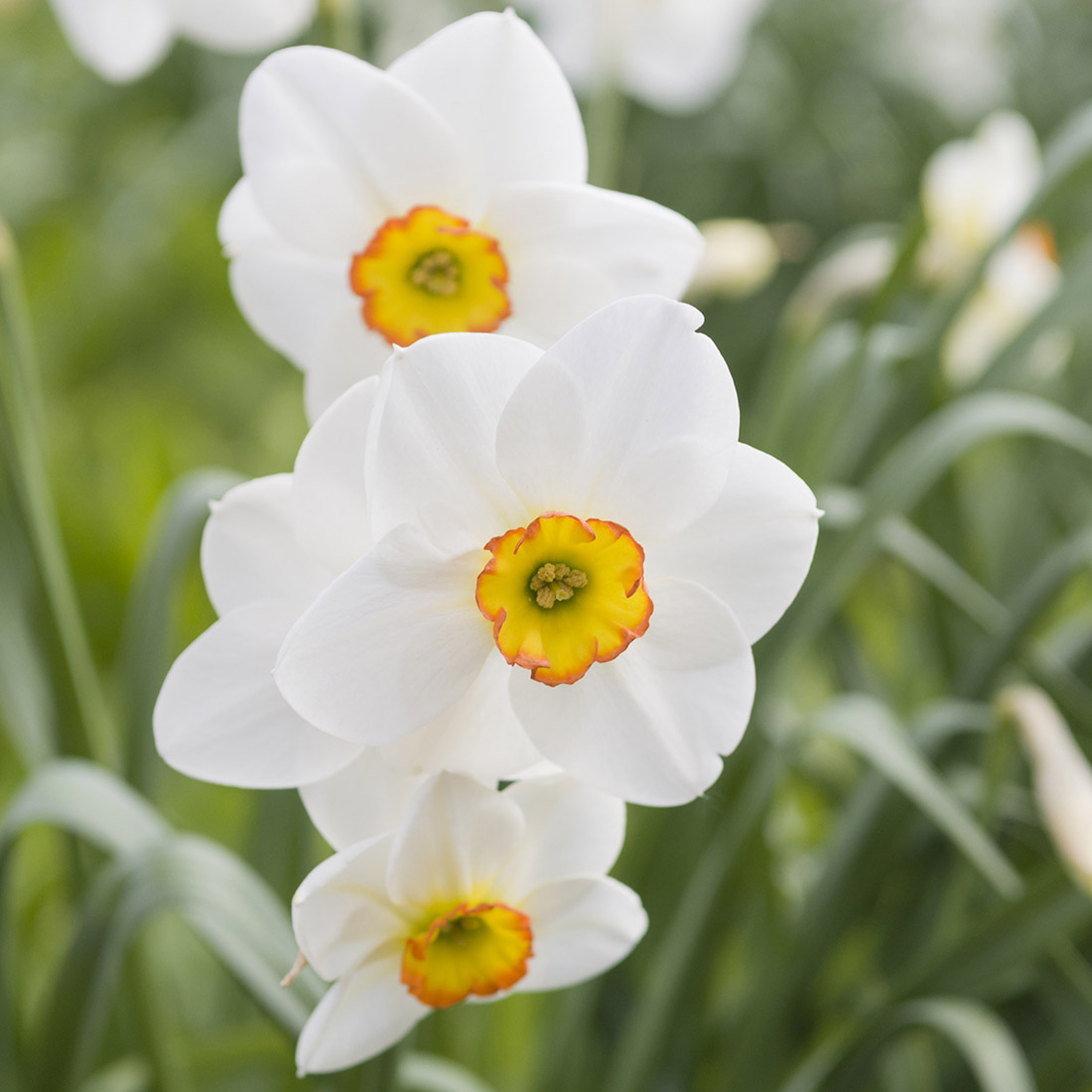
Features
Daffodil flowers have two main parts: a central cup or trumpet (corona) and a group of petals (perianth). The corona may be big and wide, long and narrow, single or double, ruffled, split, or almost flat against the petals. Plants may be small (miniature) at 5 inches tall with tiny 1/2-inch-long flowers or they may reach 18 inches tall or more with stout 4-inch-wide flowers.
Some daffodils begin blooming in March while others bloom in April and May. Selecting early-, mid- and late-spring varieties will help stagger bloom times and extend the show over a 10-week period.
Bring them in
Daffodils also make great cut flowers. The ideal time to cut them is when the flower is perpendicular to the stalk but is not quite open. (If you pick the stems when they are completely straight with a bit of bud color at the tip, the flowers may not fully open.)
Daffodil sap is toxic to other flowers placed in a vase, so before combining them with tulips, for example, place the daffodils stems in cool water for a few hours to let the sap run free. Provide fresh water and add stems of other flowers. Change the water every few days and you should have a long-lasting arrangement. Many, but not all, daffodils are fragrant. Depending on the variety, the scent may be honey-sweet or spicy, bringing an extra dimension to your cut-flower arrangement.
When to plant
In the Chicago area, daffodil bulbs should be planted in the fall—usually from October through early November. This allows time for them to develop strong root systems before the soil freezes.

Daffodils should be planted in the fall.
Daffodils can be grown in sun or part shade and they bloom before the leaves emerge on trees and shrubs. This allows light to reach the plants during cool spring weather and then provides increasing shade as the temperatures climb. This makes daffodils suitable for planting under tall shade trees, small ornamental trees like redbuds, or next to large shrubs. Daffodils grow in full sun as well. In that case, the flowers of late-blooming (May) varieties may be short-lived because the light intensity and heat are increasing. If you can, select a site sheltered from winds out of the north and west, which can knock the plants over in spring.
Bulbs do best in humus-rich, loose soil that drains quickly. Waterlogged soils cause them to rot. If your site contains heavy clay, add organic matter like compost or composted manure, mixing 6 to 8 inches deep before planting. While they are green, leaves provide food to the bulb. Removing leaves prematurely robs the bulbs of nutrition. A general rule is to plant a bulb three times as deep as it is tall. For a natural look, plant bulbs of the same variety in groups of five, seven, nine, or more.
Warmth and sunlight trigger growth, so daffodil leaves can begin poking out of the soil in February. Don’t worry about the weather—they are accustomed to very cold temperatures and their leaves will not be harmed. Often, they bloom in March or April when the temperatures suddenly drop. It won’t bother the flowers, but a heavy wet snow could flatten the plants.
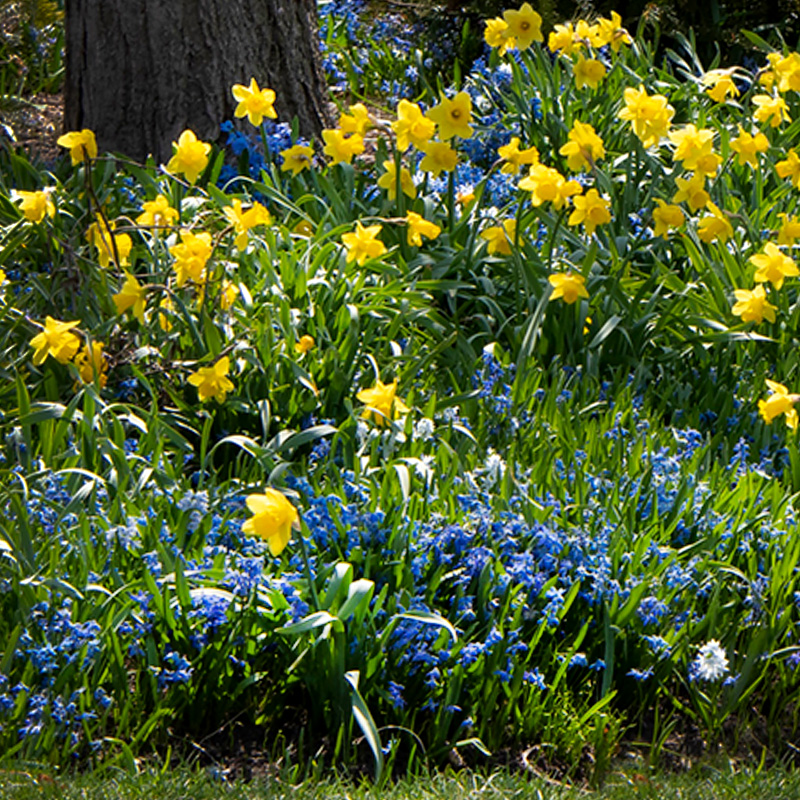
Companion plants
In shady sites, daffodils are good partners for large-leaf hostas, which will hide the spent daffodil leaves. Other shade-tolerant ground covers that can be planted with daffodils include hellebores, epimedium, perennial geraniums, Japanese forest grass, bleeding hearts, ajuga, lady’s mantle, astilbe, peonies, sweet woodruff, and heuchera, as well as native wildflowers like bloodroot, Canadian ginger, spring beauties, trout lilies, trillium, and sedges. Daffodils also look great with other early bloomers—crocus, spring snowflake (Leucojum), grape hyacinths (Muscari), Iris reticulata, and fritillaria.
Daffodils at the Garden
List of Daffodils at the Garden
Featured Spring Walk
Can you guess how many daffodils are growing at the Garden? If you were thinking maybe dozens, try hundreds of thousands!
225 different varieties totaling 470,671 bulbs. By far the largest collection of any genus at the Garden at this time.
Evening Island: 102,371
Berm: 123,575
Bird Island 47,087
Lakeside Gardens 23,716
This information is current in our plant records database as of March 2023.

Daffodil Information From the Experts
Explore the 13 Divisions of Narcissus
In Praise of Mini-Daffodils
Growing Tips for Narcissus (daffodil)
Plant Now, Applause Later
How to Plant Daffodil and Tulip Bulbs
Three Ways to Plant Bulbs [Infographic]
Forcing Daffodil and Tulip Bulbs
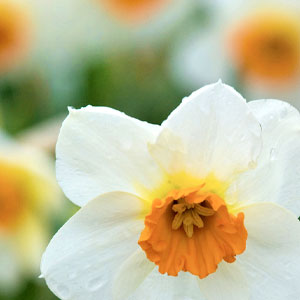
Daffodils in Literature
I wandered lonely as a cloud
That floats on high o'er vales and hills,
When all at once I saw a crowd,
A host, of golden daffodils;
Beside the lake, beneath the trees,
Fluttering and dancing in the breeze.
– An excerpt from “Daffodils” by English poet William Wordsworth (1770 – 1850)


